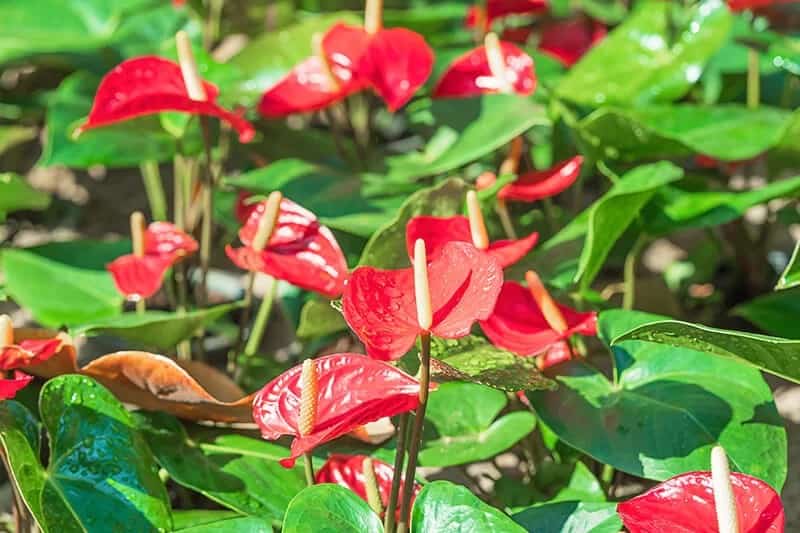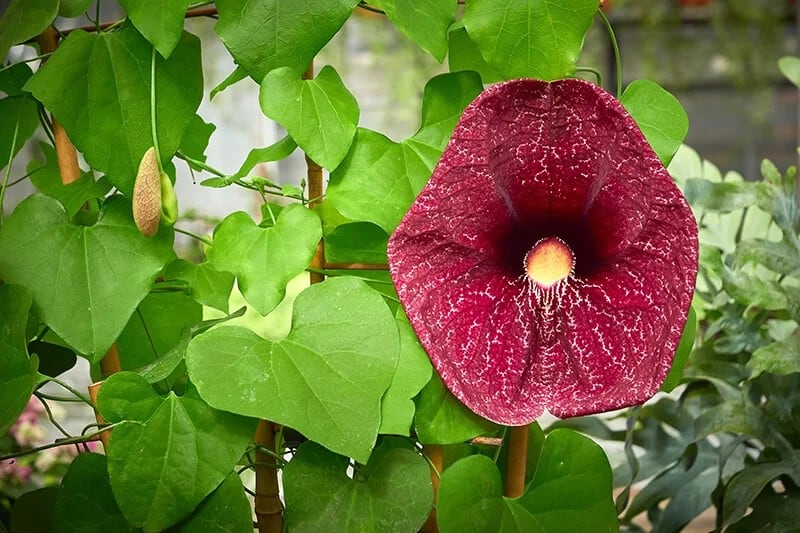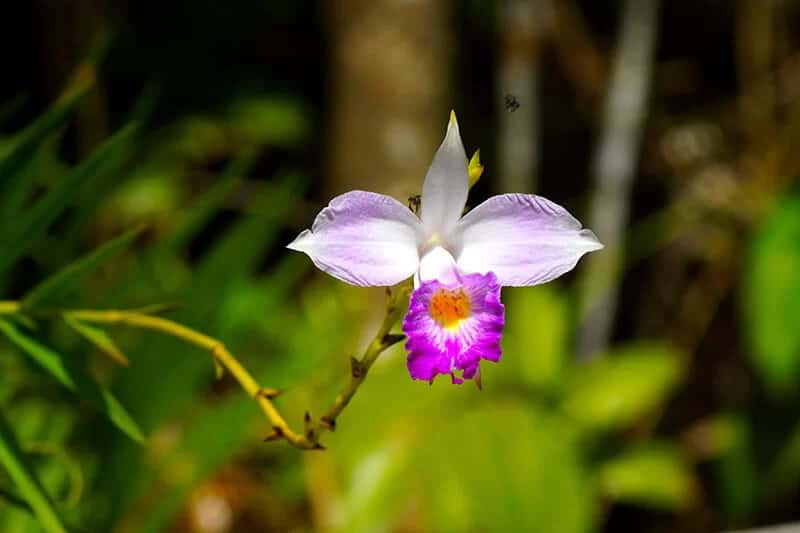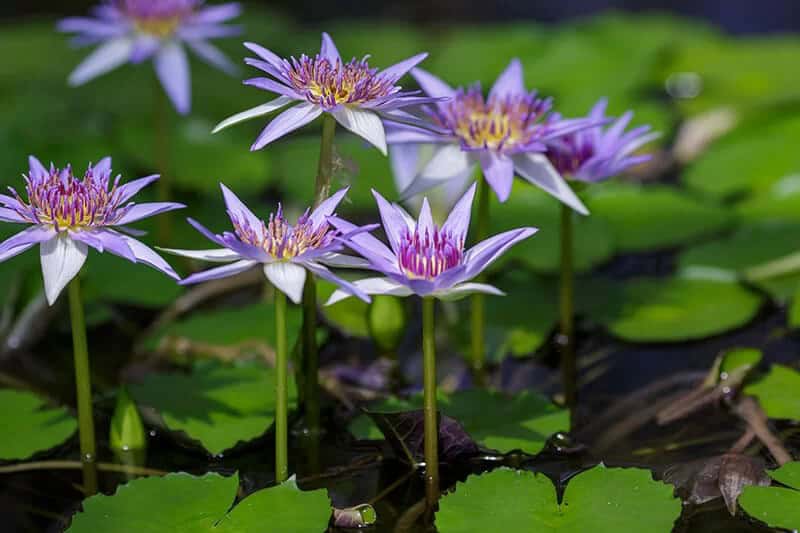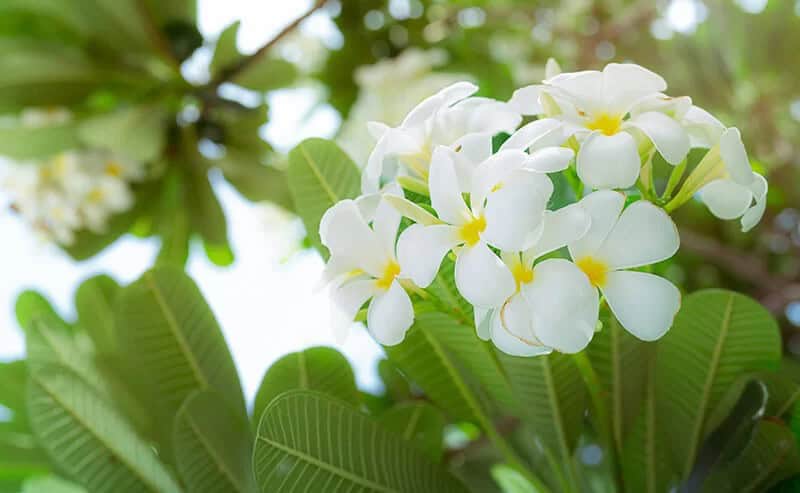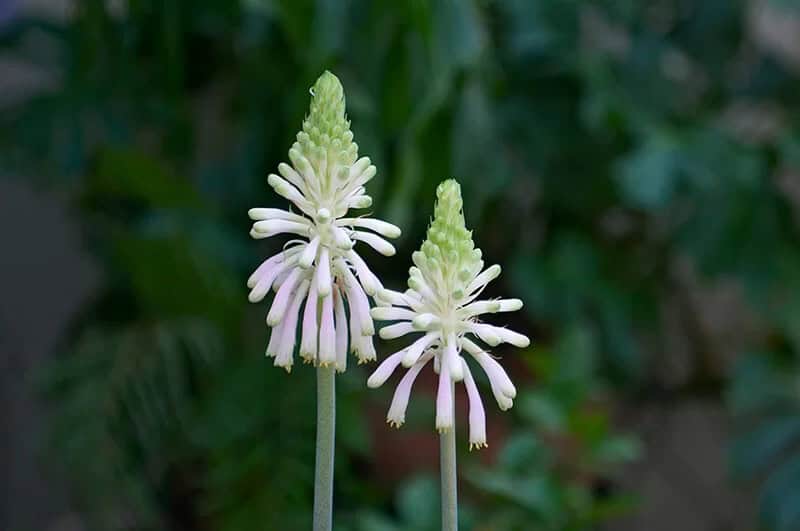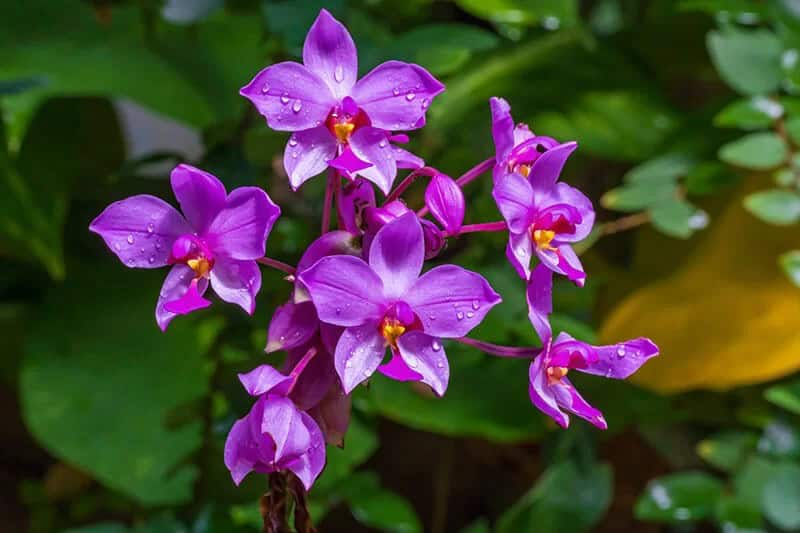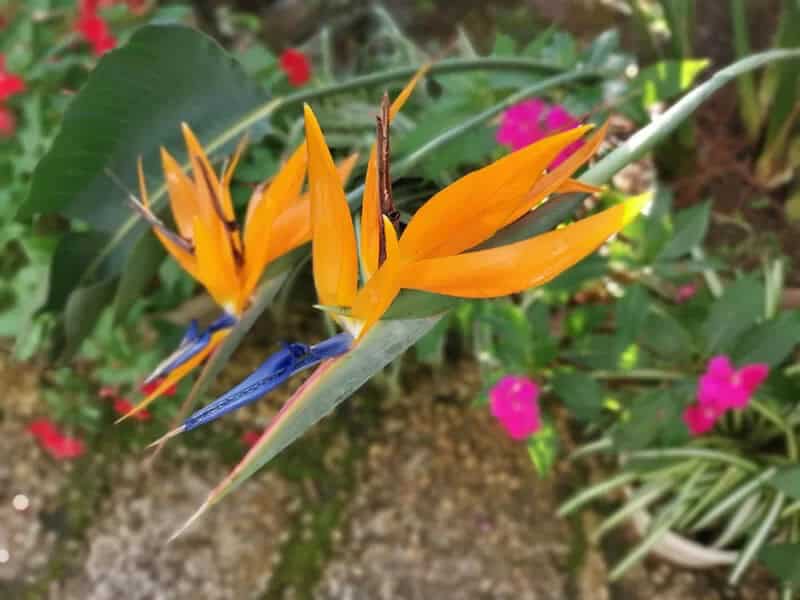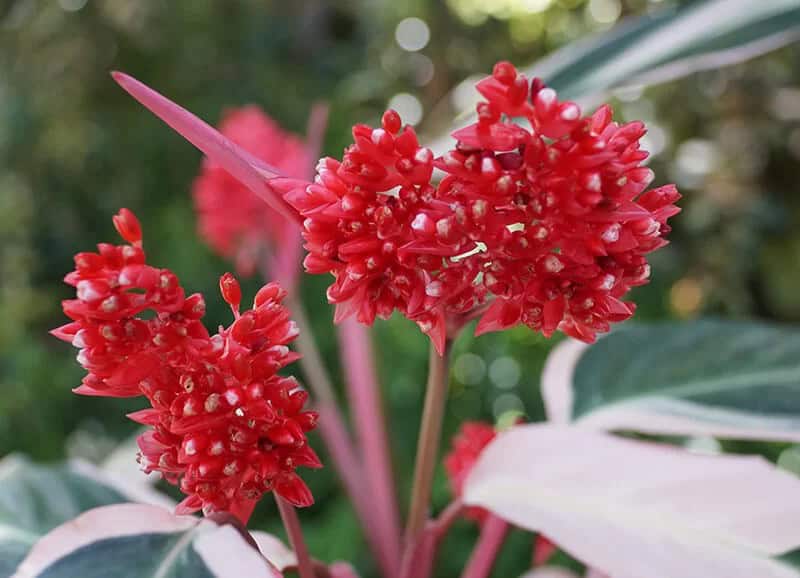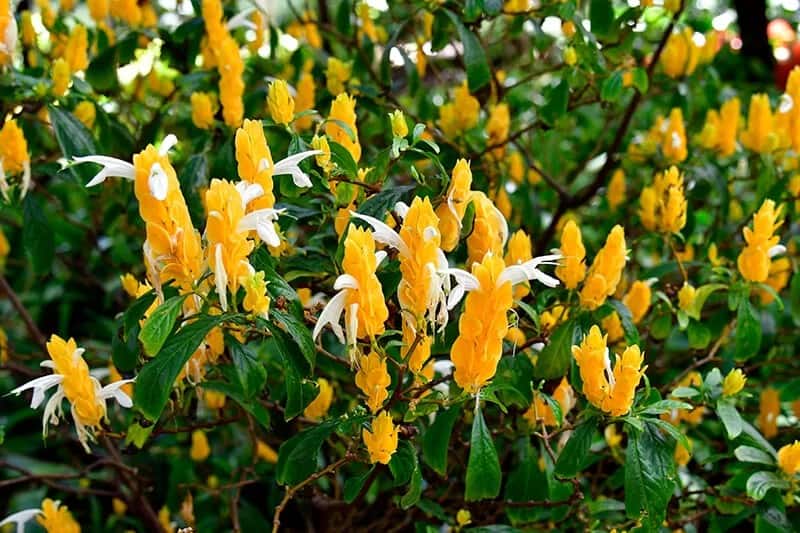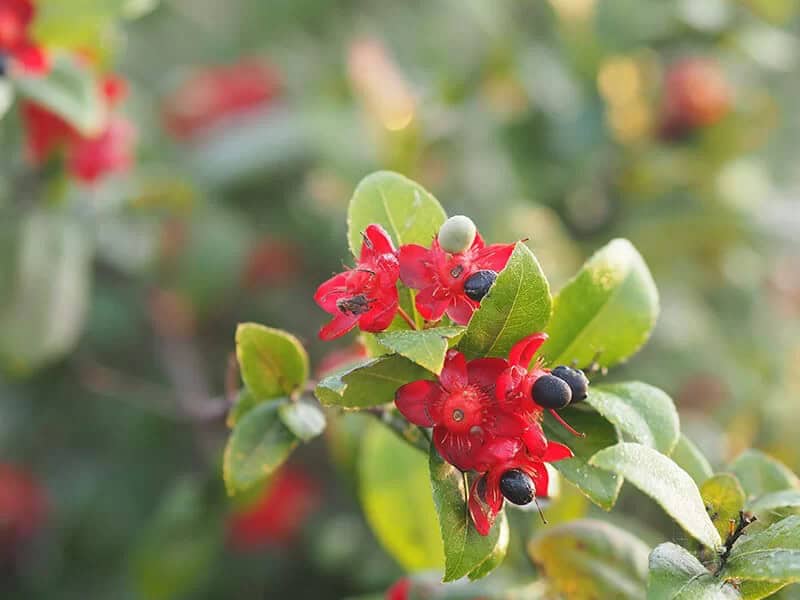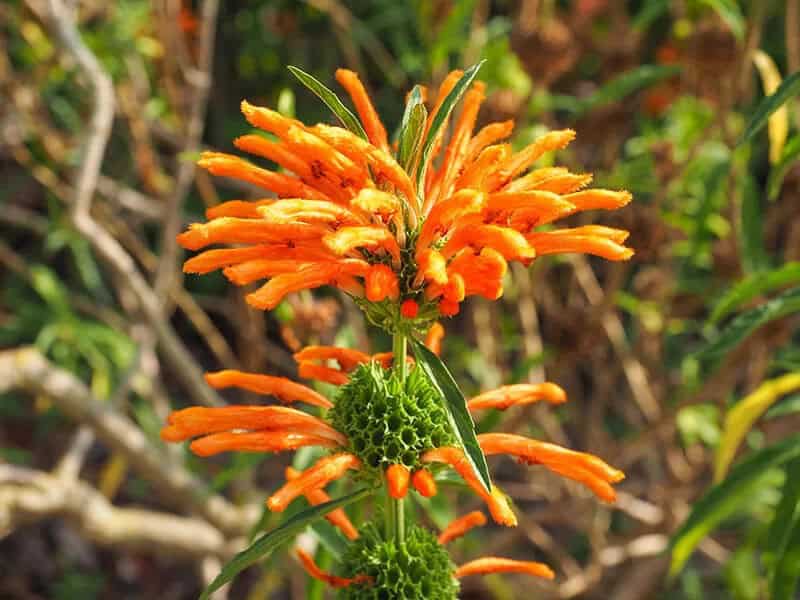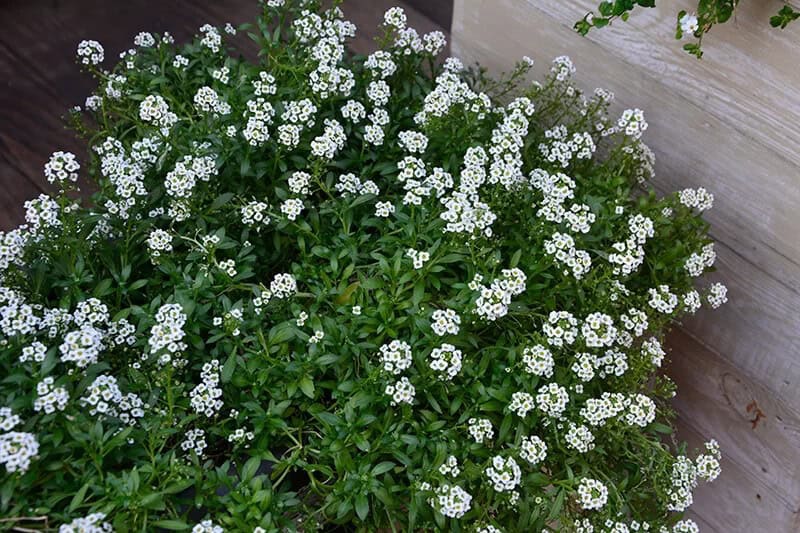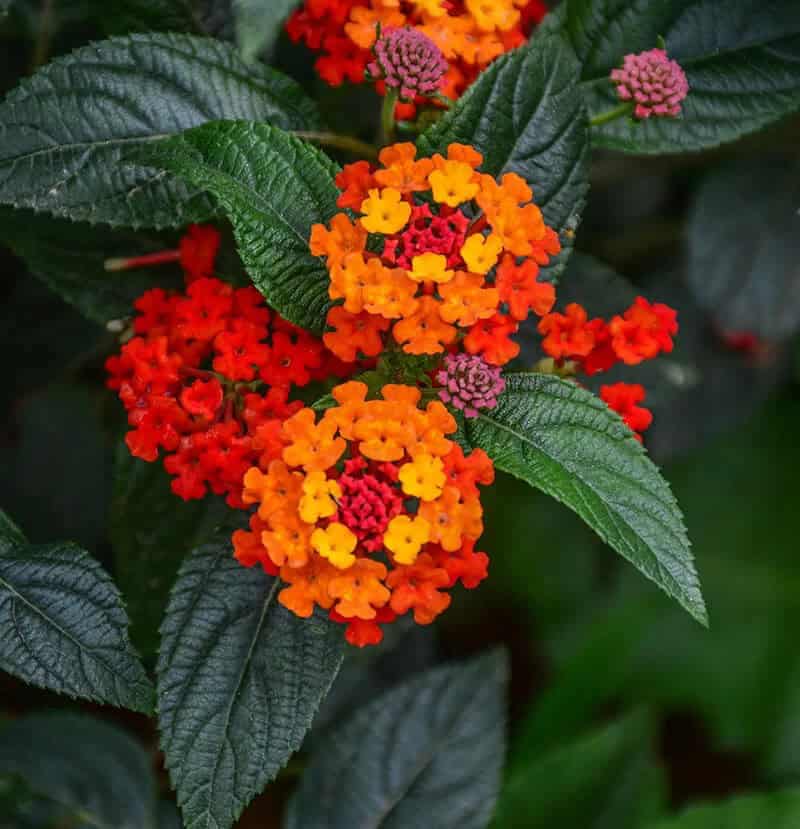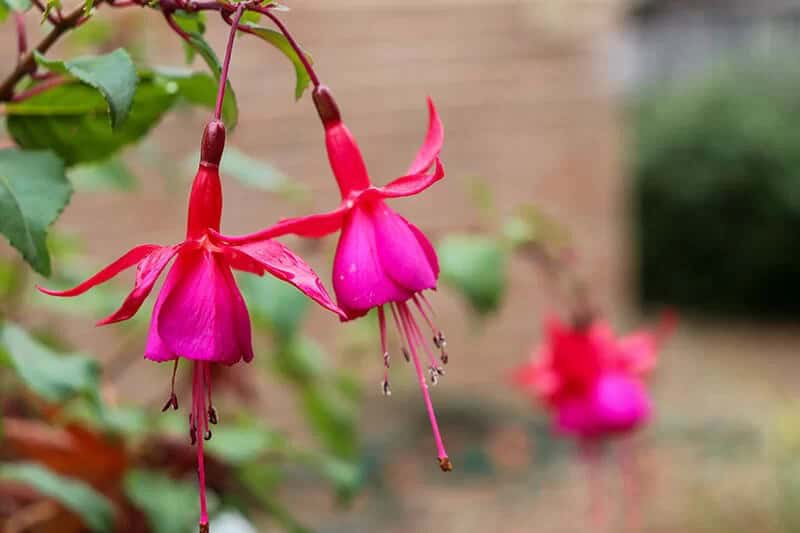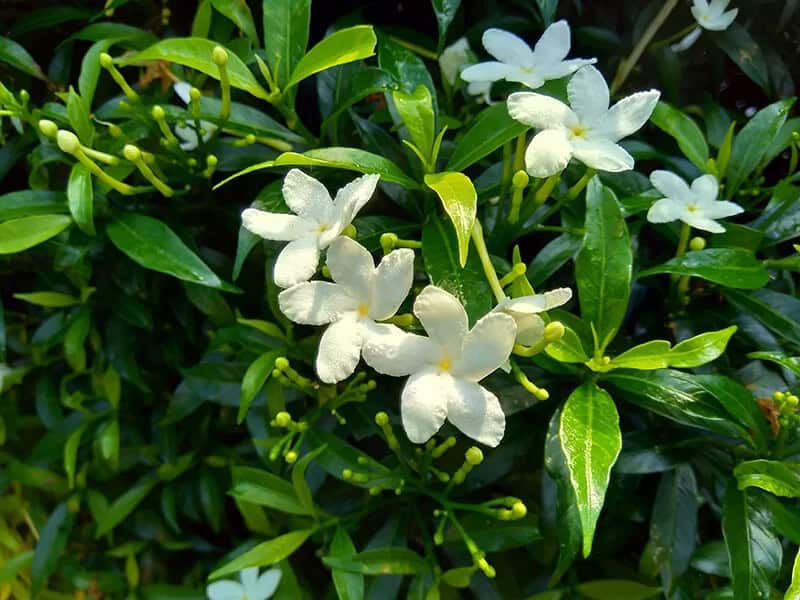While it may seem counterintuitive to plant tropical flowers in a cooler climate, the reality is that many species can thrive in a variety of environments. In fact, with the right care and conditions, you can cultivate an impressive array of tropical blooms regardless of your location’s weather patterns. The beauty of tropical flowers lies in their incredible diversity, boasting an astonishing range of shapes, sizes, and vibrant colors that can add a touch of exotic charm to any setting.
27 Best Energizing Tropical Flowers to Plant For a Journey of Self-Discovery
As you explore the world of tropical flowers, you’ll be delighted to find that many varieties release captivating scents, reminiscent of perfumes. These exotic blooms bring a welcome respite from the mundane, offering a refreshing change of pace in even the most tired of landscapes. Whether you’re seeking to add a touch of whimsy or simply create a sense of serenity, there’s a tropical flower out there waiting to captivate your senses.
Anthurium (Anthurium Andraeanum)
Anthurium’s striking appearance is characterized by two types of heart-shaped structures: vibrant red flowers that resemble a heart and glossy green leaves with the same shape. Adding a touch of whimsy are fuzzy yellow spadixes that complement the foliage. When happy in its environment, anthurium blooms profusely throughout the year. With its unique visual appeal, it’s no wonder this tropical flower is a popular choice.
The ideal conditions for an anthurium include medium water needs, good drainage, and part shade, making it suitable for USDA growing zones 11 to 12.
Calico Flower (Aristolochia Littoralis)
The Calico Flower is an eye-catching addition to any garden, boasting a distinctive tubular shape and floppy petals that set it apart from other blooms. But what truly makes this tropical flower stand out is its vibrant coloration. The delicate white stripes seem to burst forth from a rich burgundy background, creating a mesmerizing pattern that’s unique to each individual bloom.
With medium water needs, fertile soil with good drainage, and full sun to part shade, this flower thrives in USDA growing zones 9-12. Its blooming season typically runs from July to September.
Bamboo Orchid (Arundina Graminifolia)
The Phalaenopsis orchid boasts a unique blend of symbolism and beauty. Its bamboo-inspired foliage embodies the calming essence of bamboo without the concern of invasive growth. Meanwhile, its vibrant blooms add a pop of color to any space throughout the year, with an especially heavy display during the summer months. This tropical flower’s striking petal colors, reminiscent of surreal art, make it impossible to ignore.
True Indigo (Indigofera Tinctoria)
This beautiful flowering shrub is steeped in symbolism, with connotations of wisdom and justice. As it thrives in environments with medium water needs and good drainage, it’s well-suited to regions with mild droughts. Its growing zones span from 10 to 12, making it a popular choice for gardeners in these areas. Full sun is also essential for this plant, which blooms spectacularly from July to August.
The small oval leaves are a lovely complement to the vibrant purple-pink inflorescences, and while the flowers themselves aren’t overly showy, they work beautifully as a subtle accent to highlight other blooms. With its rich history of cultivation dating back centuries, showcasing a stunning indigo specimen is like taking a step into the past.
Egyptian Blue Water Lily (Nymphaea Caerulea)
When it comes to tropical flowers for a water feature, the Egyptian blue water lily is an undeniable winner. Its slender stems and intoxicating fragrance make it a standout choice. But what makes this plant truly special is its rich history – in ancient Egypt, the lotus was considered sacred, with a few blooms said to symbolize the lavish lifestyle of Queen Cleopatra herself. With growing zones ranging from 10 to 12 and full sun light requirements, this water lily thrives from July to September.
Its aquatic soil needs mean it’s perfect for a well-designed water feature, bringing beauty and serenity to any outdoor space.
West Indian Jasmine (Plumeria Alba)
Among the many species of tropical flowers, jasmine stands out for its exceptional fragrance. While its white blooms with yellow centers may not be the most striking, this variety is renowned for its intoxicating aroma. When paired with other flowers, this flowering tree’s subtle beauty is enhanced by its alluring scent. In terms of care, jasmine thrives in conditions that mimic its natural habitat: rich loams with good drainage, full sun, and moderate watering.
It flourishes in growing zones 10 to 12, where it can bloom from May to November.
King Protea (Protea Cynaroides)
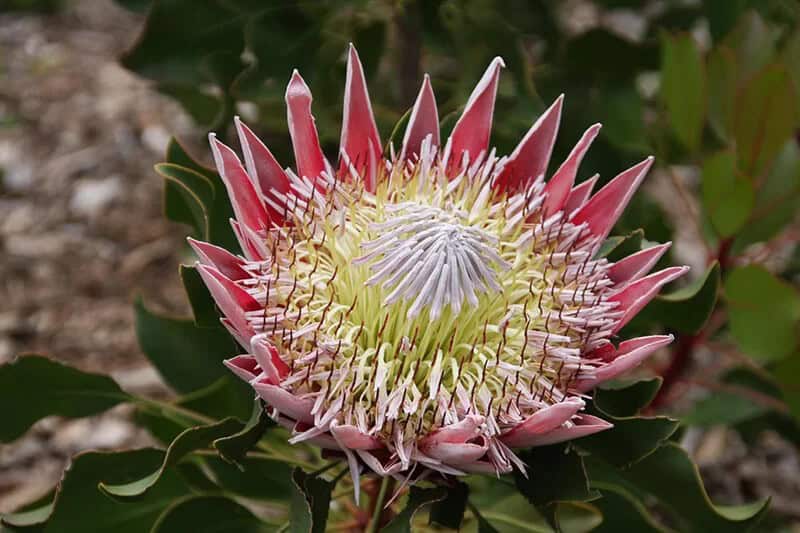
Surrounded by the symbolism of transformation and embracing uniqueness, the king protea is a striking addition to any garden or arrangement. This tropical flower requires medium watering needs, thrives in acidic soils with good drainage, and can be grown in USDA hardiness zones 9-10. When it comes to light, the king protea demands full sun to truly flourish. Its blooming season spans from November to June, making it a wonderful centerpiece during the winter months – including Christmas.
With its vibrant red petals, this flower is sure to add a pop of color and festive cheer to any room.
Unicorn Root (Veltheimia Bracteata)
Unicorn root is often associated with symbolism of purity and bliss, reflecting its delicate beauty. To thrive, this plant requires a medium level of water, rich humus-filled loamy soil with good drainage, and partial shade from the sun. Its ideal growing zones are 9 to 11, where it can flourish in temperate climates. One of its most striking features is its display of tubular pink flowers when mature, which bloom from December to March.
Although these flowers fade and enter dormancy during the summer months, they can add a touch of winter color if your unicorn root plant resides in a tropical setting, where it will attract hummingbirds – a delight for birdwatchers.
Gloxinia (Sinningia Speciosa)
Enveloped in a velvety softness, the stunning gloxinia blooms boast an impressive four-inch diameter, with a unique trumpet-like shape that’s sure to draw attention. This striking flower, available in a range of vibrant colors, is a prized addition to any garden. With medium water needs and good drainage, gloxinias thrive in zones 11-12, where they can bask in partial shade to full sun. A seasonal bloomer, gloxinias reward careful care with not one, but two stunning flowering seasons each year.
Brazilian Nightshade (Solanum Seaforthianum)
The Brazilian nightshade’s striking blue-purple petals and bright yellow stamen make it a showstopping addition to any garden or landscape design. While the white-flowering variety might be a better fit for those looking to match their blooms with specific color schemes, the plant’s unique beauty is undeniable. As a vining species, it thrives in trellises, arches, and verandas, providing a beautiful display of tropical flowers from July to August.
With its rich soil and full sun to partial shade requirements, this exotic bloom can be grown in zones 11-12.
Bird of Paradise (Strelitzia Reginae)
The Bird of Paradise, with its vibrant hues and striking shape, is an unmistakable symbol of luxury, devotion, and thoughtfulness. As a low-maintenance tropical flower, it thrives in well-fertilized soil and tolerates drought, making it an excellent choice for busy gardeners or those new to plant care. With a growing range spanning zones 10 to 12, this stunning bloom can be enjoyed year-round.
When positioned in full sun to partial shade, the Bird of Paradise truly comes alive, its beauty radiating like a beacon. Whether blooming seasonally or all year round, this regal flower is sure to add a touch of glamour and sophistication to any space.
Stromanthe (Stromanthe Sanguinea)
Wrapped in comfort and serenity, Stromanthe plants present themselves with a charming display of flowers that resemble a cozy red blanket. These petite plants thrive in medium-water conditions, fertile soil with good drainage, and partial shade. In fact, they can become sluggish when exposed to direct sunlight. Some varieties boast vibrant variegated foliage, offering visual appeal even when the flowers are not in bloom.
Stromanthe’s blooming season typically occurs from March to April, adding to their allure.
Fairy Fan Flower (Scaevola Aemula)

The enchanting fairy fan flower, native to Australia, is characterized by its unique purple florets that form whimsical circles reminiscent of fairy rings. This charming plant thrives in well-drained soil and receives the right amount of sunlight, tolerating partial shade. Gardeners in cooler climates can enjoy a constant display of blooms until frost, while those in tropical regions can relish the beauty of these flower rings year-round.
Rose Moss (Portulaca Grandiflora)
Like its symbolism of a mother’s love, this South American succulent is surprisingly adaptable and thrives in a wide range of environments. If your garden has areas that struggle to produce bountiful blooms, rose moss might be the solution you’ve been searching for. Its leaves are arranged in attractive succulent-like patterns, offering a kaleidoscope of colors to choose from.
In addition to its versatility, this plant requires dry to medium watering, good drainage, and can even tolerate poor soils. It’s a great option for gardeners in zones 2 to 11, who want to add some vibrant color to their outdoor spaces. Whether placed in full sun or partial shade, rose moss is sure to provide plenty of energy and visual interest throughout the blooming season, which typically runs from June until frost.
Lollipop Plant (Pachystachys Lutea)
The Lollipop Plant’s Whimsical Charm and Growing RequirementsThis captivating perennial boasts a unique appearance, with yellow flower petals resembling lollipops or overlapping scales. The delicate white blooms that arch out from the plant add an air of sophistication to its playful demeanor. Depending on the climate, the Lollipop Plant can grow quite tall – up to six feet in tropical regions – or remain relatively compact, reaching about 18 inches in temperate zones.
In terms of growing conditions, this plant requires medium watering, organically rich soil with good drainage, and full sun exposure. It thrives in USDA Hardiness Zones 10 to 11, making it an ideal choice for gardeners living in these regions. With its vibrant colors and whimsical charm, the Lollipop Plant is sure to delight garden enthusiasts of all ages.
Mickey Mouse Plant (Ochna Serrulata)
The Mickey Mouse plant is a vibrant addition to any garden, boasting yellow flowers that are often overshadowed by its striking fruit. The fruit itself resembles Mickey Mouse’s signature ears, with red and black hues that make for stunning visual displays. While it’s commonly used as an accent piece, this tropical shrub also has the potential to be shaped into a lush hedge.
Some key considerations when growing your own Mickey Mouse plant include its medium water needs, preference for loamy soils, and ability to thrive in zones 9-11. With full sun to part shade, and blooming season typically occurring from May to June, this plant is well-suited to warm climates and can be a delightful addition to any outdoor space.
Sweet Tea (Osmanthus Fragrans)
The sweet tea bush is imbued with noble symbolism and auspicious energies, making it a desirable addition to any garden. This evergreen shrub has moderate water requirements, tolerating drought but thriving in well-draining soil with average moisture levels. It can also grow successfully in clay soils, providing flexibility for gardeners. The sweet tea bush is hardy in USDA zones 9-11 and requires full sun to partial shade, making it suitable for a variety of environments.
One of the shrub’s most notable features is its intense apricot-scented flowers that bloom heavily in April, with occasional blooms extending into fall. By planting sweet tea bushes around a seating area, you can create a private oasis with a sweet and inviting aroma.
Heartleaf Iceplant (Mesembryanthemum Cordifolium)
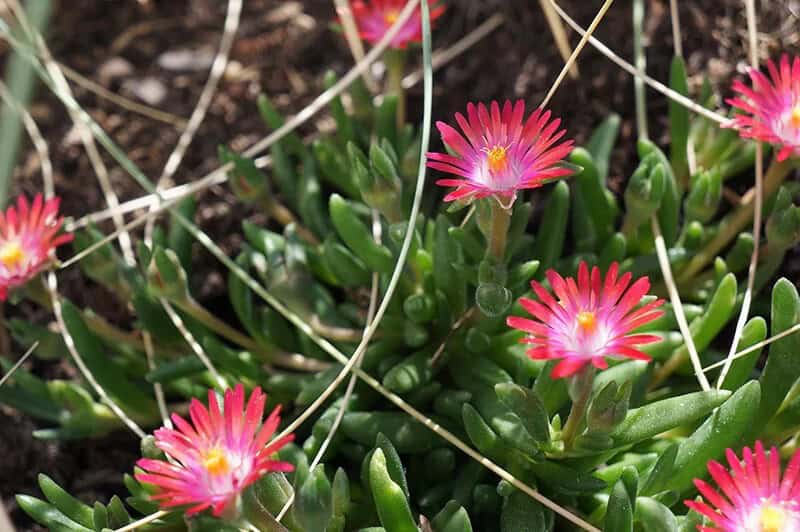
The heartleaf iceplant (Delosperma congestum) is a striking succulent that boasts shiny red flowers and lustrous green leaves. Its unique characteristic is its ability to spread like a mat, making it an ideal groundcover option. However, this plant’s invasive tendencies mean it requires careful consideration before planting. In traditional Zulu medicine, the heartleaf iceplant is believed to bring good luck and is used to alleviate joint pain.
To thrive, this succulent requires dry to medium watering, sandy loams with good drainage, and full sun exposure. It flourishes in growing zones 10-11, blooming from May to September.
Marvel of Peru (Mirabilis Jalapa)

The Marvel of Peru, with its vibrant blooms and versatile nature, is a true marvel indeed! This tropical flower has been a popular choice for centuries, particularly during the Victorian era when it was commonly used to create stunning hedges. But what makes it truly remarkable is its ability to produce an array of colors and patterns from a single plant, making it a showstopper in any garden setting.
With medium water needs, tolerance for a wide range of soils, and thriving in zones 9-11, this beauty can be grown in full sun to part shade conditions, blooming from June until the first frost. Whether you’re looking to create a dramatic display or showcase a single specimen, the Marvel of Peru is sure to impress!
Lion’s Tail (Leonotis Leonurus)
The Lion’s Tail (Leonotis leonurus) is a tropical shrub that boasts striking orange flowers with tubular shapes, reminiscent of its namesake’s majestic manes. While typically orange, these blooms can also manifest in white, apricot-hued, or attractive off-white varieties. When cultivated in warm climates or greenhouses, the Lion’s Tail has been known to produce a year-round display of vibrant flowers, including during winter months.
Lobelia (Lobelia Erinus)
Lobelia flowers bring a splash of vibrant color to any landscape. With their symbolic meaning tied to love, good luck, and prosperity, these tropical blooms are sure to add a touch of beauty and positivity to your outdoor space. Growing lobelia is relatively straightforward, as it requires medium water needs, organically rich soil with good drainage, and can thrive in zones 10 to 11. Providing full sun to part shade will also help these flowers reach their full potential.
One of the best things about lobelia is its adaptability – you can choose between trailing varieties that cascade down walls or upright varieties that stand tall on their own. And with its low maintenance requirements, lobelia is an excellent choice for rock gardens, where it can add a pop of color and interest to your design.
Sweet Alyssum (Lobularia ‘Inlbusnopr’ Snow Princess)
The symbolism behind sweet alyssum’s delicate white blooms goes beyond its price point, making it a treasured addition to any garden. This charming flower requires moderate watering, with soil that drains well and an average texture. Its growing zones are 10 to 11, allowing it to thrive in areas with similar climates. With full sun to partial shade, sweet alyssum’s clusters of tiny white flowers emit a sweet fragrance from spring through late fall, providing a delightful sensory experience.
To add visual interest to your landscape, mound-shaped flowers offer a beautiful contrast to larger, showier blooms like those found on petaled flowers. Notably, this variety is known for its rapid growth and heat tolerance, making it an ideal choice for gardeners seeking a low-maintenance yet rewarding addition to their outdoor spaces.
Lantana (Lantana Camara)
Tropical flowers, often symbolizing rigor, thrive in medium water conditions that can tolerate drought. They require average soil with good drainage, though they can adapt to poor soil types. These sun-loving plants flourish in zones 10 to 11, where full sunlight is readily available. As the blooming season stretches from July until frost, the vibrant colors of white, orange, red, yellow, and purple within a single cluster create stunning visual displays.
Native to South and Central America, these flowers attract birds and butterflies, making them a sought-after addition to any landscape. The variety of colors offers flexibility in blending with your existing palette.
Fringed Rosemallow (Hibiscus Schizopetalus)
The fringed rosemallow is a show-stopping bloom that demands attention with its intricate, recurved petals and long, drooping stamen that appear suspended in mid-air. Native to Africa, this majestic flower has also earned the nickname ‘Japanese lantern’ due to its pendant-like shape. Beyond its striking appearance, the fringed rosemallow represents physical passion, delicate beauty, honor, and prosperity.
In terms of its growing conditions, it requires rich soil with good drainage, full sun, and a medium level of watering. The ideal growing zones for this flower are 10 to 11. As an added bonus, it produces seasonal blooms, making it a great choice for those looking to add some visual interest to their garden.
Busy Lizzy (Impatiens Walleriana)
The Impatiens plant, a popular choice for adding vibrant colors to shady areas of your garden, is known for its symbolism of eagerly withholding. This variety requires medium water levels, rich soil with good drainage, and thrives in growing zones 10 to 11. It can tolerate partial shade to full shade, making it an ideal option for low-light areas that receive heavy shade. The blooming season typically runs from June until frost, providing constant color throughout the year.
With flat petals designed to showcase its bright colors, this tropical flower is often treated as an annual in cooler climates despite originating from Tanzania and Mozambique.
Lady’s Eardrops (Fuchsia)
Fuchsia flowers are renowned for their dramatic, drooping beauty, as if they’re weighted down by their own elegance. To amplify this effect, consider planting them in hanging baskets. These tropical blooms come in a vibrant array of colors, including the striking bicolor featured here. With varieties to suit every space, fuchsia is an excellent choice for any gardener.
Beyond their visual appeal, these flowers also attract hummingbirds and other bird species, making them a delight for nature enthusiasts. In terms of growing conditions, fuchsias require rich soil that retains moisture, moderate watering, and partial shade to full shade. They thrive in USDA zones 10 to 11, where they can be enjoyed from May until the first frost.
Gardenia (Gardenia Jasminoides)
The gardenia is a fragrant flowering shrub that exudes feminine charm and symbolizes purity. Its medium watering needs are met by acidic, humus-type soil with good drainage. This evergreen shrub thrives in growing zones 8 to 11, where it can bask in part shade under the warm sunlight. From April to June, gardenias burst forth with blooming flowers that fill the air with their sweet scent.
While its large blooms may not steal the show from more exotic florals, they are certainly visually appealing. For those in warmer climates, the gardenia’s blooms can be enjoyed year-round, while cooler climates must settle for a few months of floral delight.
27 Most Exhilarating Tropical Flowers to Plant to Explore the World
If your climate prohibits growing tropical flowers as perennials outside, there are alternative ways to enjoy their vibrant blooms. One approach is to treat them as annuals, planting them outdoors with the understanding that they’ll perish at frost’s arrival. Alternatively, you can bring a piece of the tropics indoors by cultivating them as houseplants.
Tropical flowers offer a thrilling adventure, often showcasing unique and striking characteristics.
Ranging from delicate clusters of fragrant blooms to show-stopping extravaganzas, these flowers inject bold personality into any space and help you uncover your personal botanical style. The experience of trying out a new tropical flower can be a delightful journey filled with surprises.
